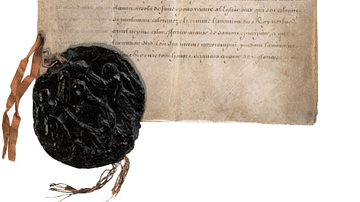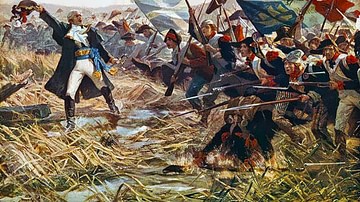Search
Search Results

Image
The "Spring of Nations": Revolutionary Europe in 1848 - From Revolution to Reaction: Nationalism and Upheaval in Nineteenth-Century Europe
This map illustrates the sweeping republican revolts and political upheavals that erupted across Europe in 1848, a year known as the People's Spring or the Spring of Nations. Part of a broader continuum of revolutionary movements since the...

Article
Trial and Execution of Louis XVI
The trial and execution of King Louis XVI of France (r. 1774-1792) was one of the most impactful events of the French Revolution (1789-99). In December 1792, the former king, now referred to as Citizen Louis Capet, was tried and found guilty...

Article
4 Women of the French Revolution
The French Revolution (1789-1799) sought to dismantle the oppressive society of the old regime and build a new world based on the principles of "Liberty, Equality, Fraternity". This push for societal change led to a burgeoning feminist movement...

Article
Affair of the Diamond Necklace
The affair of the diamond necklace (1784-86) was a scandal that centered around Queen Marie Antoinette of France (l. 1755-1793). Although the queen was innocent of any involvement in a plot to steal a luxurious diamond necklace, the scandal...

Article
Continuity and Change after the Fall of the Roman Empire
The cataclysmic end of the Roman Empire in the West has tended to mask the underlying features of continuity. The map of Europe in the year 500 would have been unrecognizable to anyone living a hundred years earlier. Gone was the solid boundary...

Article
Louis XIV and the Revocation of the Edict of Nantes
Beginning in the 16th century, Protestants in France struggled in their rapport with royal power. Protestants owed the recognition of their rights more to sovereign decrees than to genuine tolerance or religious pluralism. The realization...

Definition
Battle of Jemappes
The Battle of Jemappes was a decisive battle in the War of the First Coalition (1792-97), part of the French Revolutionary Wars (1792-1802). On 6 November 1792, a French army under General Charles-François Dumouriez defeated an Austrian force...

Definition
Anne Boleyn
Anne Boleyn (c. 1501-1536) was the second wife of Henry VIII of England (r. 1509-1547). Anne, sometimes known as 'Anne of a Thousand Days' in reference to her short reign as queen, was accused of adultery and executed in the Tower of London...

Definition
Henry VII of England
Henry VII of England ruled as king from 1485 to 1509 CE. Henry, representing the Lancaster cause during the Wars of the Roses (1455-1487 CE), defeated and killed his predecessor the Yorkist king Richard III of England (r. 1483-1485 CE) at...

Definition
Mary I of England
Mary I of England reigned as queen from 1553 to 1558. The eldest daughter of Henry VIII of England (r. 1509-1547) with Catherine of Aragon (1485-1536), she restored Catholicism in England while her persecution of Protestants led to her nickname...